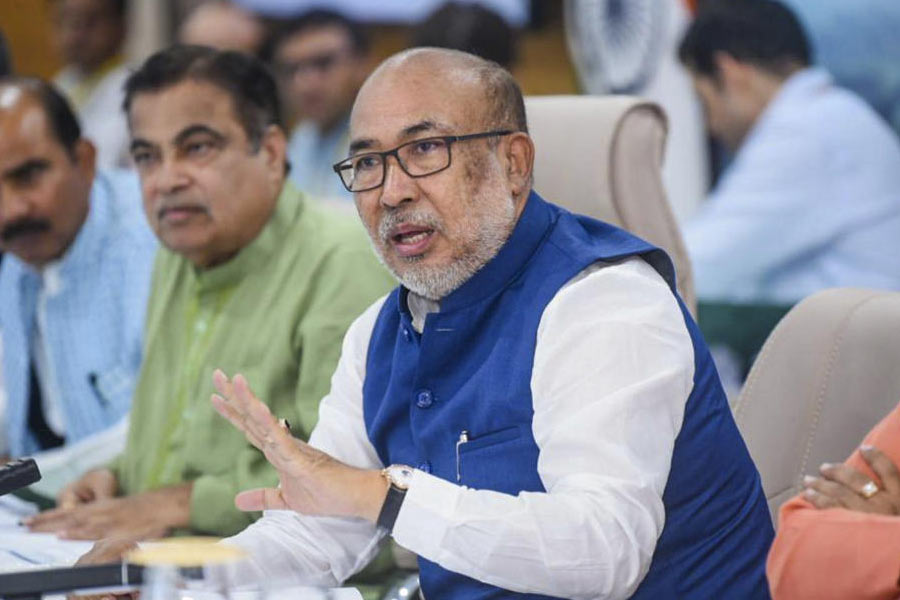Talking about Whose Life Is It, Anyway? (1981), Roger Ebert writes, ‘The Dreyfuss character cannot participate any longer in the two arenas that made his life worth living: His artistry, and his sexuality.… I could not accept the movie’s conclusion, which is that the Dreyfuss character’s decision to die was, for him, the correct decision. More to the point, I didn’t think the movie successfully made the argument.… I believe that a person has a legal right to die. But I do not believe that the character in Whose Life Is It, Anyway? has a sufficient reason to die. He has his intelligence, his memory, his eyes and ears and speech. There is life left for him to live.’
Unlike, Ken Harrison (Richard Dreyfuss) in the 1981 film, Venky (Vishal Jethwa) in Salaam Venky has little to live for. Euthanasia, for him, would probably be a dignified way to go. I bring this up not only because the two films deal with a similar subject – euthanasia – but also because despite being a work of fiction, the arguments Whose Life Is It, Anyway? put forth and the manner it did so led a critic of Ebert’s stature to debate the morality of the issue at length.
Salaam Venky, in contrast, is inspired by a true story which made media headlines in 2004. The filmmakers here had all the ingredients necessary for a stirring saga. They just had to follow the arc of its protagonist’s dramatic life and death – and the equally heart-breaking and inspiring story of his mother.
However, all potential is undone by the vapid and manipulative writing which spares no effort to tug at the heartstrings. Which is not such a bad thing but for how desperate the filmmakers seem to be, employing every conceivable cliché of Hindi cinema. One can almost visualise them thinking, ‘Well, this ought to make the viewer reach out for their handkerchief.’ Well, it didn’t. It just left me shaking my head, and by the time the mother starts singing ‘Jo tum saath ho’ even as the son is breathing his last, I was making my way out of the theatre.
The tone is set right at the outset, with a scene between Venky and Sujata (Kajol) sparring verbally in the hospital room. It is so overblown, so overwritten, that it had me cringing. It continues with another mother-son sequence before the interval, with the filmmakers intent on milking it for all its maudlin quotient. There’s a guruji too, spouting pop psychology about trains arriving and leaving stations – some do that early, some are on time. Late in the film we are also introduced to the absentee father, who had abandoned Venky as a ‘dead investment’. The sequence adds little more than a few redundant minutes to the narrative. And there’s Aamir Khan, a shadowy figment of Sujata’s imagination who keeps appearing to engage her in philosophical musings on life, death, fate, free will. And when all fails, we have corny dialogues falling back on hoary Hindi film moments – Anand’s ‘Zindagi badi honi chahiye’ moment, DDLJ’s ‘palat’ moment, references to Kal Ho Na Ho. Yes, we love our films, but when a film is so desperate to mine these moments, you know it has a problem.
The major problem with Salaam Venky is its artifice. There’s not a moment that rings true, not Venky’s suffering or heroism, not what his mother is going through, not his visually challenged childhood sweetheart Nandini, not his sister who has her own history with their father. It does not help that each of them time and again go the flashback route involving a song, or that everything is articulated in so many words, or that everyone seems to have the best make-up on at all times. I never once got the feeling that here’s a family in a hospital, dealing with what should be mind-numbing despair. It’s almost like they might have walked out of a Karan Johar or Sanjay Bhansali set, or even worse, a bad daily soap opera. And then there’s the background music, perfectly orchestrated to get your tear duct to go on overdrive.
The legal drama in the second half fares a little better. Thanks primarily to Prakash Raj who gives us the film’s one honest moment when he – as the judge charged with the responsibility of delivering the verdict on Venky’s petition to allow him to die – comes to meet Venky in the hospital. However, it is too little too late. If the friendly doctor (Rajeev Khandelwal) and friendly nurse (there’s also a Sikh pharmacist, what else, who offers Sujata medicine at 50 per cent discount) in the first half seem to operate in an Anand-like world, the kind lawyer (Rahul Bose), the overwrought-reporter-turned-compassionate activist, the uncaring public prosecutor, are all caricatures in the service of a manipulative script. Everything in the film – moodily lit hospital room, moodily lit courtroom, the lighthouse that the childhood sweethearts visit, the video being played in court to ‘prove to the world what Venkatesh is’, the schmaltzy dialogues (‘I have to keep him alive even though we are fighting for his right to die’ says the doctor – is geared for effect.
Which is sad, because, one, Revathy directed the wonderful Phir Milenge (2004) which eschewed everything obvious to give us an emotive saga of hope in the face of despair. And, two, this is a subject – euthanasia and organ donation – that needs to become part of our discourse. Fourteen years after Venkatesh went to court demanding the right to die in 2004, the Supreme Court of India passed a historic judgment, permitting passive euthanasia in India, thus placing the power of choice in the hands of the individual, over government, medical or religious control. However, it is still a contested matter, and Salaam Venky could have been a conversation opener.
I began this review with Whose Life Is It, Anyway?. I end it with a reference to the same. That film, a work of fiction, felt authentic. This one, a true story, arguably more inspiring, comes across as packaged.










